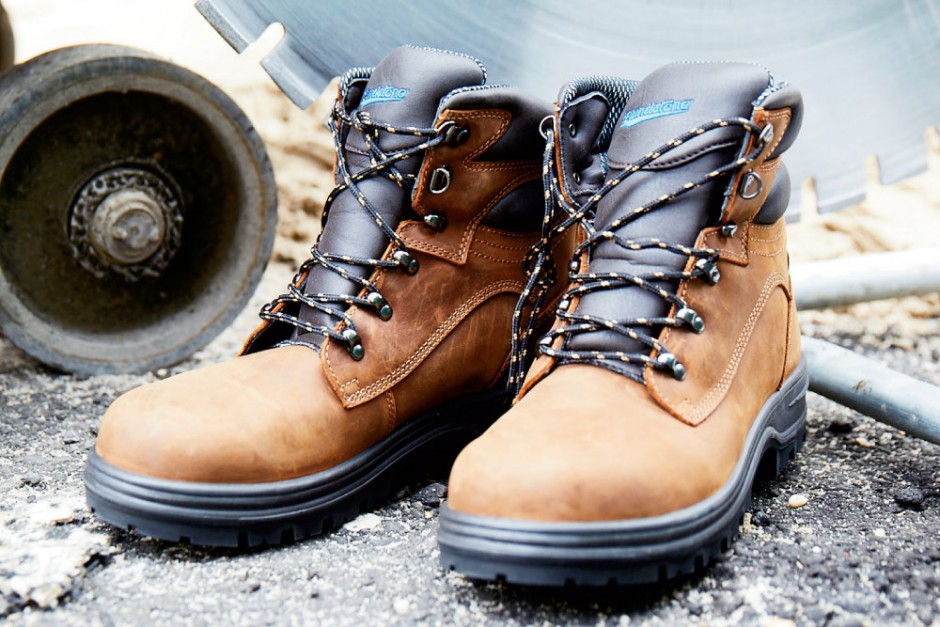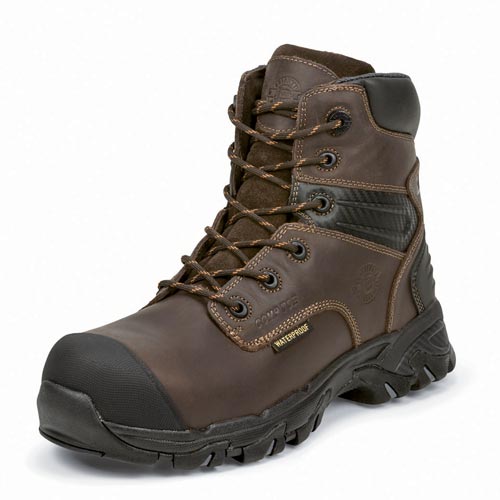

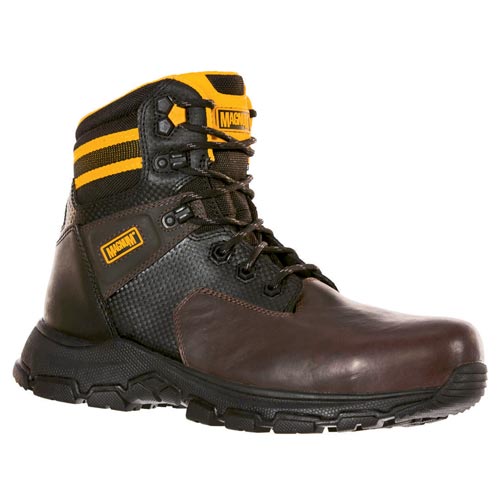
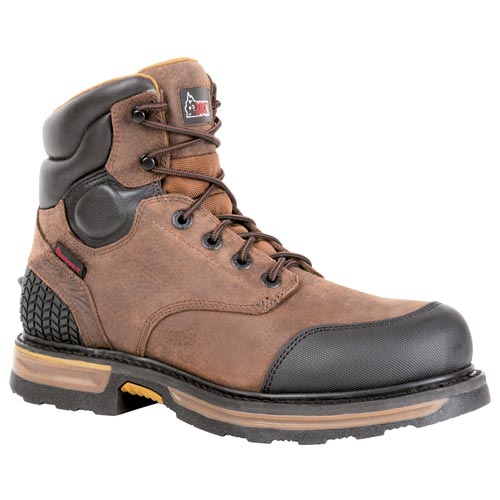


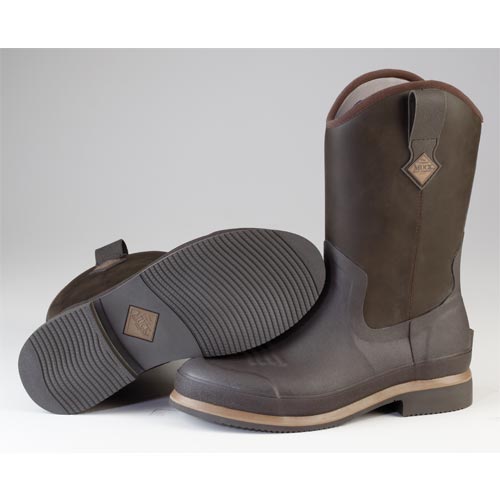
Times change. Forty years ago, most twenty-somethings landed their first job and stayed put until retirement. Even 20 years ago, that was still the norm. Their work footwear needs rarely changed. Technical innovations improved durability, comfort and performance, but the cosmetics stayed constant.
But the era of company pensions and workplace stability is gone. Most people in the workforce now change jobs more than 10 times over the course of their career, recent Bureau of Labor data suggests. And Millennials (born between 1981 and 1996) are even more apt to job hop. One recent study predicts they’ll hold 15 to 20 jobs on average before they retire.
Occupational footwear brands are adapting to the age of career instability by increasing product versatility to meet the needs of a rapidly growing Millennial workforce. (The demographic currently makes up 36 percent of the labor force and that number is expected to increase by at least 10 percent by 2020.)
Part of the challenge lies in designing footwear that works in a mobile office world. Thanks to smartphones and other technology, being “at work” doesn’t necessarily mean you’re in the same place at the same time every day. And this shift is increasing demand for better performance features and more style versatility in work footwear.
Engineers, foremen, construction workers, nurses, school teachers, office managers and restaurant workers need to move seamlessly from the office to job sites without changing their shoes, notes Tim Engel, vice president of sales at Blundstone. To accommodate them, Blundstone has introduced two executive models, a lace-up dress shoe and a pull-on dress boot with a steel toe and safety standard compliance elements. “They still have that classic, pull-on Blundstone look, but it combines leisure and steel,” Engel explains. “Unless someone stepped on your toe, you wouldn’t know it was a safety shoe.”
Today even the typical desk job requires a fair amount of running around, notes David Kahan, president and CEO of Birkenstock U.S.A. “It doesn’t matter whether a person is in a traditional service job, a tech job or a creative job,” he says. “Even in office-type jobs, employees do a lot of walking. The average New Yorker walks 2.4 miles a day. So, even if you just commute to an office job, comfort is key.”
The challenge for designers is to craft versatile work styles that don’t sacrifice function. And while Millennials have an affinity for heritage brands, they “don’t necessarily want to look like Dad,” sporting a big, bulky safety boot, says Brandon Barker, brand manager for Justin Original Workboots. This generation grew up in sneakers—shoes that were lightweight, loaded with bells and whistles and supremely versatile. They expect the same from the shoes they wear to work. And leading occupational footwear brands are rising to the challenge.
All in a Day’s Work
With construction and other industrial jobs expanding in the U.S., work footwear companies are enjoying a surge in sales to younger customers. Rocky Work, a division of Rocky Brands, is seeing a growing demand among Millennials for its construction and light industrial product, says Mike Roundhouse, product designer. Likewise, Wolverine is “taking off” as a favorite of Millennials working in construction, auto repair, utilities and warehouses, according to Linda Brunzell, vice president of global marketing. “Looking at the primary work category, manufacturing was our core business 20 years ago,” she notes. “Now, with the economy coming back, it’s construction.” Hi-Tec U.S.A.’s Magnum work boot division is also seeing an uptick in sales of products aimed at uniformed workers like police and security officers, firemen and EMS workers, says Ian Little, marketing and e-commerce manager. Much of that demand is being driven by Millennials, Little notes.
The eco-friendly sector provides another burgeoning job market for Millennials. Not only is the field growing, but the younger generation has a passion for it. A 2014 Pew Research Center study found that 80 percent of Millennials surveyed prefer to work for companies that curb their ecological footprint. And work footwear brands are rolling out edgier styles to appeal to workers in green-related industries like alternative and renewable energy, organic farming and sustainable community development. Case in point: In addition to Justin’s pull-on, two-toned, flame-resistant Frac’er boot, the company offers a more fashion-forward Stampede line and a high-end European hiking-inspired Worktek Sabre collection. “Younger consumers want a little more flair than older consumers, whether in a 6-inch lace-up or a western-influenced wellington,” notes Barker. To complete the package, the styles include safety toes, metatarsal guards and Justin’s new Kinetic Management Technology, a bio-mechanically engineered design that improves support, stability and comfort. “We sell a lot of boots to young adults because they can wear them on the job and keep them on when they go out,” says Barker. Comfort is their top priority, he says, but durability is a close second, “because it is usually the younger adults who do the most rugged work.”
But work footwear isn’t confined to steel-toe work boots. Millions of younger people now work in healthcare, education, culinary arts and the airline industry. They, too, spend hours on their feet and need supportive comfort that the traditional ballet flat or oxford can’t provide. Many of these service industries are growing, particularly healthcare. According to a 2013 study by the National Society of High School Scholars, eight of the top 25 career paths preferred by students age 15 to 27 were healthcare-related.
That’s proving a boon for brands like Birkenstock, which is well known for the comfort aspects of its casual styles. It’s a relatively easy leap for consumers to expect similar benefits from its Birkenstock Professional divsion. “Our DNA is comfort, so any consumer who is on their feet all day can benefit,” says Kahan.
But comfort alone won’t cut it. Millennial customers have high product expectations, notes Ebeth Pitman, Dansko’s vice president of marketing. “It’s no longer enough to offer a comfortable shoe, a stylish shoe, a versatile shoe or something with great durability features,” she says. “Consumers now expect brands to consistently deliver on all of those aspects.” To that end, Dansko has recently introduced the Santa Fe collection of slip-resistant, colorful sneakers and the XP performance clog, which features a slip-resistant outsole and cushioned insole. Other stylish yet job appropriate styles include the Mirabel sculpted heel and the stacked Havana wedge. “By delivering on all-day comfort and taking care of foot, leg and back health, we support professionals so they can focus on the task at hand and not on their feet,” says Pitman. “And they fit in with the rest of their lives, whether they’re out to dinner with friends or running errands on the weekend.” Pitman adds, “Beyond special occasion wear, the days when people reserved shoes for specific parts of their day are long gone. Versatility is mandatory.”
The Social Network
Online is the best way to reach Millennials.
Design isn’t the only change work footwear companies are making to win the Millennial market. Communication strategies, too, are being revamped. Once-ubiquitous hangtags, for example, are becoming as passé as advertising in the Sunday circular. Justin Original Workboots has replaced multiple hangtags with a single tag that condenses the boot’s safety and product information and gives a web address for a detailed video explanation.
Increasingly, work footwear companies are supplementing newspaper and magazine ads with online content to reach the social media generation. Their efforts do more than sell product; they attempt to build an emotional connection with their brand. Wolverine, for instance, targets Millennials through its #PutABootOnIt campaign, which encourages consumers to take pictures of themselves wearing their boots at work or paired with on-trend outfits as well as in unexpected places—on a pet’s paws, for instance. It’s an easy way for consumers and brands to interact, and an affordable way for brands to learn about their target audience.
Muck Boot is constantly in pursuit of brand ambassadors—credible third parties like bloggers, celebrities, laborers and athletes willing to talk about its boots through Facebook, Twitter, Instagram and other social media channels. “They’re people who Millennials look to for advice,” explains Sean O’Brien, Muck’s director of footwear. “We want them to see people that they connect with wearing the product and having a great experience.”
Because Millennials do more research online before they buy than older shoppers do, Magnum promotes its products through videos, 360-degree photographs and lifestyle imagery on the company’s website, says Ian Little, marketing and ecommerce manager. “We spell out exactly what the product does,” he says. “That’s being driven by the younger consumer.”
Younger shoppers also expect to see a wide selection with frequent new product launches, says Engel. If the sneaker companies have taught Milliennials anything, it’s that there’s always another limited-edition must-have about to be released with great fanfare. They expect the frequent updates from work shoes as well. To meet their demands, you’ve got to change the merchandise mix frequently, says Tim Engel, vice president of sales for Blundstone. “Brand selection in safety can get tired,” he says. “Retailers need to update their mix just as they would their leisure selections. The older customer might buy the same boot over and over again, but Millennials like to try new things.”
The constant quest for the latest and greatest styles opens the door to potential sales for savvy retailers. Millennials are more likely to experiment with new brands and styles, notes Mike Roundhouse, designer for Rocky Work. “If you give younger customers a reason to pick up a boot, they’ll do it,” he assures. —S.S.
Sneaker Logic
Exploiting Millennials’ fondness for a lightweight, sneaker-like aesthetic is the design approach for Rocky Work. “They need a tough, abrasive shoe that resembles the tennis shoe that they’re used to,” Roundhouse says. An example of such hybrid design is the brand’s Elements collection, introduced this year. It features footwear for four different types of work sites: Wood, Block, Dirt and Steel. In addition to work boot staples like waterproof linings and triple-stitch reinforcements, each collection is specifically designed for those work conditions. For example, the Dirt series features a 5-mm lug outsole to release dirt and debris with every step and a TPU kickoff for easy removal, while the Wood collection offers a medial cushion for kicking boards into place and a puncture-resistant plate in case the wearer steps on a nail. “We try not to add anything superfluous,” Roundhouse says, noting athletic style touches include a mesh tongue. “We’re not throwing things on just to make the boots look cooler. Everything has a purpose,” he adds.
Younger shoppers, Roundhouse says, are willing to pay a premium for such performance and style details that resonate with them. “They’re not afraid to spend money to get quality,” he says.
Such user-friendly versatility features are what many cost-conscious Millennials are searching for, agrees Wolverine’s Brunzell. She points out that many are saddled with student loan debt and still earning entry-level salaries. For them, design versatility offers a strong value proposition: The more use they can get out of a boot or shoe, the better. “If they’re going to invest in footwear, it’s important to them that they can be proud to wear it on the work site and at the bar,” she says.
Wolverine’s Marshalled skate–inspired, steel-toe style for Spring ’15 is a good example of work versatility. It features a TPU heel stabilizer, NXT odor control lining and slip-resistant lug outsole. While some Millennials still look to older workmates for advice on what to wear on the job, most “want something that reflects them and what they grew up with—color and athletic style paired with technology,” explains Brunzell. “They want to know that what they have is going to work, but style is important.” Other iterations include a steel-toe chukka.
That combination of protection and style is evident in Muck Boot’s Spring ’15 collection. It features gingham ankle and full-size Breezy boots, as well as the Frontier, a western-style boot with a waterproof, microfiber leather upper, XpressCool fabric lining and a rubber vamp, providing comfort in temperatures from 40° to 95°. “You can go from the jobsite to the restaurant to the bar and then wear it in the backyard,” says Sean O’Brien, Muck’s director of footwear, adding that the wear-everywhere design gives consumers more bang for their buck. “They want features that allow them to work harder and longer without having to think about their feet,” he says. “But they’re not looking for something that was their dad’s or their grandfather’s work boot. It has to have a younger look and feel. It’s not necessarily fashion, but it shouldn’t look like a tank.”
“The way the product looks is more important to Millennials than older consumers,” agrees Magnum’s Little. “We’ve certainly styled our range with looks in mind. It looks like something you’d want to wear, rather than something you have to wear.” The Precision Ultralite II boot, for example, is among Magnum’s most popular styles with Millennials. With a full-leather upper in hues like coffee brown and a less bulky build, the boot transitions easily from the job site, but retains safety features like a slip- and oil-resistant rubber outsole and ladder grips.
“Millennials are more trend-conscious than their predecessors,” agrees Kahan of Birkenstock. “And they favor a more casual wardrobe at work.” That makes the Profi-Birki, a closed-back clog, one of the brand’s most popular styles for young professionals. The look is equally wearable at work and on a weekend outing, he says.
With Millennials entering the workforce in droves as Baby Boomers leave it, the growth potential is tremendous for those who tap into the market effectively. And if brands—and retailers—can capture young customers’ loyalty with footwear they can wear to work, after hours and on weekends, they lay the groundwork for long-term loyalty. As O’Brien sums up, “The Millennial segment is the potential for growth in work boots going forward.”

